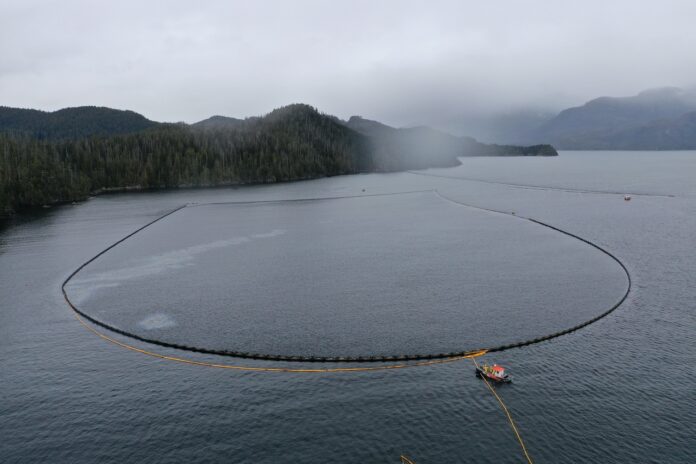BERNADETTE Jordan, federal Minister of Fisheries, Oceans and the Canadian Coast Guard, on Monday announced the successful removal of approximately 60 tonnes of heavy fuel oil and diesel from the MV Schiedyk, a historic shipwreck that posed a significant threat to the marine environment in the area of Nootka Sound, British Columbia.
The operation to remove the oil from the vessel was conducted by Resolve Marine Group, a US-based company. Canadian subcontractors supported the operation, including the Canadian-registered Atlantic Condor vessel, which acted as the operations platform on the water.
Due to the depth of the MV Schiedyk, Resolve Marine Group used remotely operated vehicles to drill holes into the vessel’s four fuel tanks and secure a drainage valve with a hose attached for pumping operations. To remove the heavy fuel oil, hot water was injected into the tanks to liquefy the oil within. The oil and water mixture was then pumped to the surface through the hoses and onboard the Atlantic Condor, where the oil and water were separated. The tanks onboard the MV Schiedyk were then flushed until fuel was no longer detected.
The Canadian Coast Guard and Western Canada Marine Response Corporation were on the water to respond to any oil released, with members of the Mowachaht/Muchalaht First Nation, Fisheries and Oceans Canada, Environment and Climate Change Canada and other partners and contractors monitoring the shorelines, sensitive areas, marine mammals and other wildlife during the operation.
The response has been jointly managed by the Canadian Coast Guard, BC Ministry of Environment and Climate Change Strategy and the Mowachaht/Muchalaht First Nation, with a virtual Incident Command Post staffed by personnel from across Canada.

The MV Schiedyk, a 147-metre cargo ship, sank in 1968 after striking a submerged ledge on the south side of Bligh Island and later drifting down Zuciarte Channel to sink in 120 metres of water on the east side of Bligh Island. Sheen was reported on the water in December 2020, and the Canadian Coast Guard established an Incident Command Post to conduct monitoring and containment operations.
Jordan said: “My sincere thanks to all the partners involved in the response to the MV Schiedyk. This was a challenging operation, given the depth of the vessel and the remote location, but a critical one. Marine pollution is a serious threat to our oceans and the marine life they sustain. The success of this operation is a great relief, and the direct result of the expertise, teamwork and dedication of all involved.”
Quick Facts
* The recent results of a technical assessment determined that immediate action to remove bulk fuel was necessary to protect Nootka Sound, an area rich in natural beauty, history, culture, wildlife, and in the traditional territory of the Mowachaht/Muchalaht First Nation.
* In addition to the fuel pumped from the shipwreck, more than 48,500 kg of oil and oily waste has been recovered since the start of the response in December, 2020. More detailed information about the response is available on the incident web site, hosted by Western Canada Marine Response Corporation, at: www.spillresponsebc.ca
* Built in Ireland in 1948, the MV Schiedyk was a 147-metre (483 ft) cargo ship that sank on January 3, 1968. Before the 34 crew members abandoned ship, oil was reported on the water but it is unknown how much oil escaped at that time.










